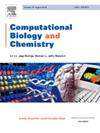IF 2.6
4区 生物学
Q2 BIOLOGY
引用次数: 0
摘要
背景钙结合蛋白S100家族(S100s)与各种心血管疾病的生物学过程密切相关。方法我们分析了GEO数据库中的多个测序数据集,比较了S100s在动脉粥样硬化组织与正常样本中的表达谱。我们采用无监督聚类技术,根据S100相关基因表达谱的复杂变化,发现了强直性脊柱炎亚型。随后的分析深入研究了免疫细胞浸润和GSVA通路富集,揭示了不同强直性脊柱炎亚型的细微免疫特征。利用机器学习技术开发了强直性脊柱炎的诊断模型。结果 无监督聚类分析确定了两种不同的强直性脊柱炎亚型(C1和C2),它们以特定的S100基因表达模式为特征。基于射频的诊断模型显示出最高的有效性(AUC=0.881),前五个基因(S100A4、S100A10、S100A11、S100A13、S100Z)被用于构建诊断提名图。研究结果对强直性脊柱炎的精确治疗和预后评估具有重要意义,并为进一步研究相关机制铺平了道路。本文章由计算机程序翻译,如有差异,请以英文原文为准。
Comprehensive analysis of single-cell and bulk transcriptome unravels immune landscape of atherosclerosis and develops a S100 family based-diagnostic model
Background
The S100 family of calcium-binding proteins (S100s) had been tightly related to the biological processes of various cardiovascular diseases. This study aims to investigate the expression of S100s in Atherosclerosis (AS) and explore their potential as diagnostic biomarkers and therapeutic targets.
Methods
We analyzed multiple sequencing datasets from the GEO database to compare the expression profiles of S100s in AS tissues versus normal samples. Employing unsupervised clustering techniques, AS subtypes were discerned based on the intricate variations in S100-related gene expression profiles. Subsequent analyses delved into immune cell infiltration and GSVA pathway enrichment, shedding light on the nuanced immune landscape characterizing diverse AS subtypes. Machine learning techniques were employed to develop a diagnostic model for AS. Single-cell RNA analysis was utilized to investigate the cellular distribution of S100 hub genes in AS.
Results
Unsupervised clustering analysis identified two distinct AS subtypes (C1 and C2), characterized by specific S100 gene expression patterns. The RF-based diagnostic model exhibited the highest efficacy (AUC=0.881), and the top five genes (S100A4, S100A10, S100A11, S100A13, S100Z) were used to construct a diagnostic nomogram.
Conclusion
This study systematically elucidates the roles of S100s in AS, offering insights into molecular subtyping, immune characteristics, and diagnostic model construction. The findings provide valuable implications for the precise treatment and prognosis assessment of AS and pave the way for further research into related mechanisms.
求助全文
通过发布文献求助,成功后即可免费获取论文全文。
去求助
来源期刊

Computational Biology and Chemistry
生物-计算机:跨学科应用
CiteScore
6.10
自引率
3.20%
发文量
142
审稿时长
24 days
期刊介绍:
Computational Biology and Chemistry publishes original research papers and review articles in all areas of computational life sciences. High quality research contributions with a major computational component in the areas of nucleic acid and protein sequence research, molecular evolution, molecular genetics (functional genomics and proteomics), theory and practice of either biology-specific or chemical-biology-specific modeling, and structural biology of nucleic acids and proteins are particularly welcome. Exceptionally high quality research work in bioinformatics, systems biology, ecology, computational pharmacology, metabolism, biomedical engineering, epidemiology, and statistical genetics will also be considered.
Given their inherent uncertainty, protein modeling and molecular docking studies should be thoroughly validated. In the absence of experimental results for validation, the use of molecular dynamics simulations along with detailed free energy calculations, for example, should be used as complementary techniques to support the major conclusions. Submissions of premature modeling exercises without additional biological insights will not be considered.
Review articles will generally be commissioned by the editors and should not be submitted to the journal without explicit invitation. However prospective authors are welcome to send a brief (one to three pages) synopsis, which will be evaluated by the editors.
 求助内容:
求助内容: 应助结果提醒方式:
应助结果提醒方式:


